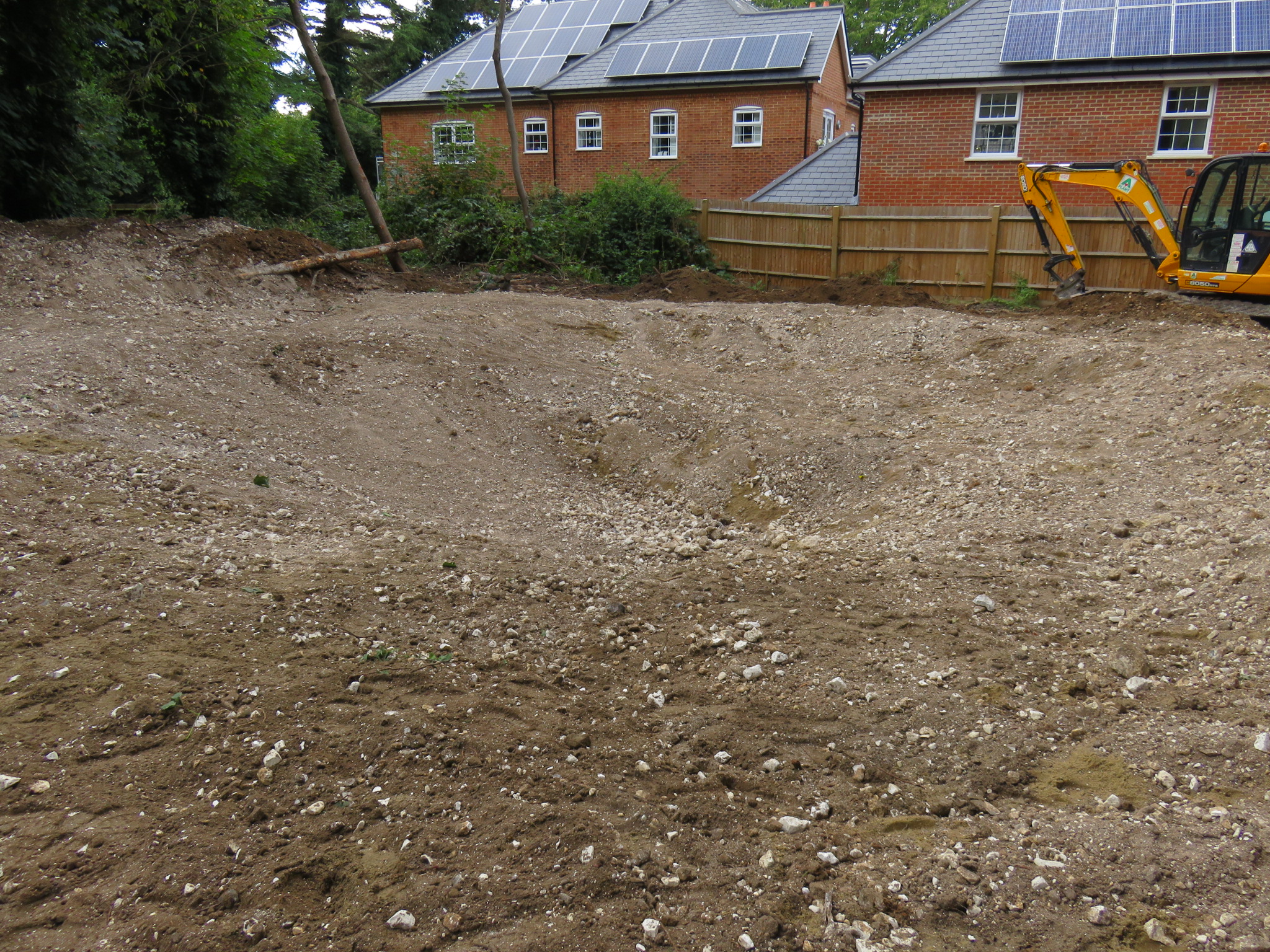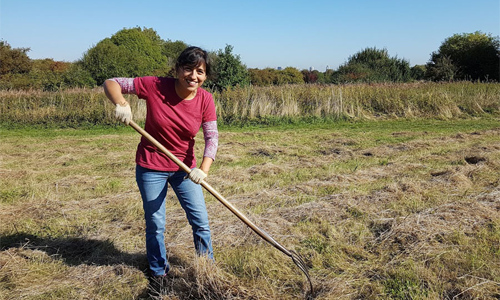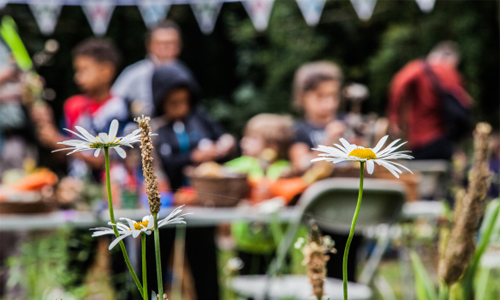An impressive amount of hard work has been accomplished at Queen Mary’s Woodland over the last few weeks by SNCV and local resident volunteers, working alongside the Biodiversity Team. The result a new pond for the woodland!
We knew that common frogs and common toads were present in the woodland and a pond seemed a good idea to further diversify its habitat. We chose a relatively open, sheltered area of the woodland to site the pond in, recently cleared of cherry laurel shrubs, roots and other unwanted vegetation. This will provide the pond with a mix of sun and shade. Enough sun to attract frogs and toads to breed in warmer, shallow margins and encourage good plant growth but also limit direct evaporation of water. Of course, being on free draining chalk, we knew a liner would be required and that meant a lot more work than just digging a hole in the ground. In the ‘old days’, any ponds on chalk would have been hand lined with straw and ‘puddled’ clay (squished and trodden down to squeeze out air pockets to make a solid, immovable, watertight layer) to hold water and were known as ‘dew ponds’ for watering the livestock pasturing on the Downs. This is something of a lost art and we chose the more efficient and reliable approach of using an artificial pond liner.
With Biodiversity Officer David Warburton at the controls of a 5 ton excavator, we dug down into the underlying chalk and further refined its shape with hand tools. Then with the benefit of volunteer help, a 225m² Firestorm 1mm liner was laid out (and phew, was it heavy!). This has been given copious protection, being sandwiched between sand and a special geotextile matting. Finished off with a covering of chalky soil mix and then sown with a wild pond plant seed mix, the exciting prospect of a new habitat for the woodland was given form.
The pond will be fenced in the near future to safeguard against casual access and allow the pond time to establish, free from disturbance. Hopefully, the coming winter rains will yield sufficient clean rainwater to fill the pond and the pond plant seed mix will germinate to provide a valuable habitat opportunity for common frogs, common toads and a myriad of other animals and plants to breed and thrive next year.
We fully expect this pond to have a ‘dynamic’ water level and it may occasionally dry out. Not all ponds need to have constant water all year (although our UK amphibians need some water into the summer to complete their life cycle from egg to emerge onto land as a juvenile). A great many of our pond species are well adapted to fluctuating water levels within ponds and even drying out. This drop in water levels can be a good thing, by controlling any large fish present, which in a relatively small pond like this, are often be detrimental to the pond’s overall wildlife value, by eating lots of the invertebrates.
We will keep a careful eye on its development over the coming months and if necessary, carry out further planting to ensure we have a diversity of plant species and vegetation structure in the pond and grading into the woodland. Planting and seeding is appropriate on this occasion, given the pond’s location and the lack of abundant wetland habitat in the vicinity to recruit plants from. It will be fascinating to observe it developing over the next few months and years and we’ll keep posting to keep you updated on what we find.
A pond for wildlife can bring a great deal of interest to any garden and does not need to be as big as ours to be of real value for wildlife. Now is a great time to install ponds to harness the autumn winter rains. For more guidance on this take a look at the Froglife website here.
Creating our woodland pond was a big job for us to take on and a very big thank you goes out to our volunteers who made an extra effort in getting the job finished. We just need some water now: so let it rain, let it rain, let it rain!
It begins… (taking levels to ensure depth, gradients and top levels are what they should be)
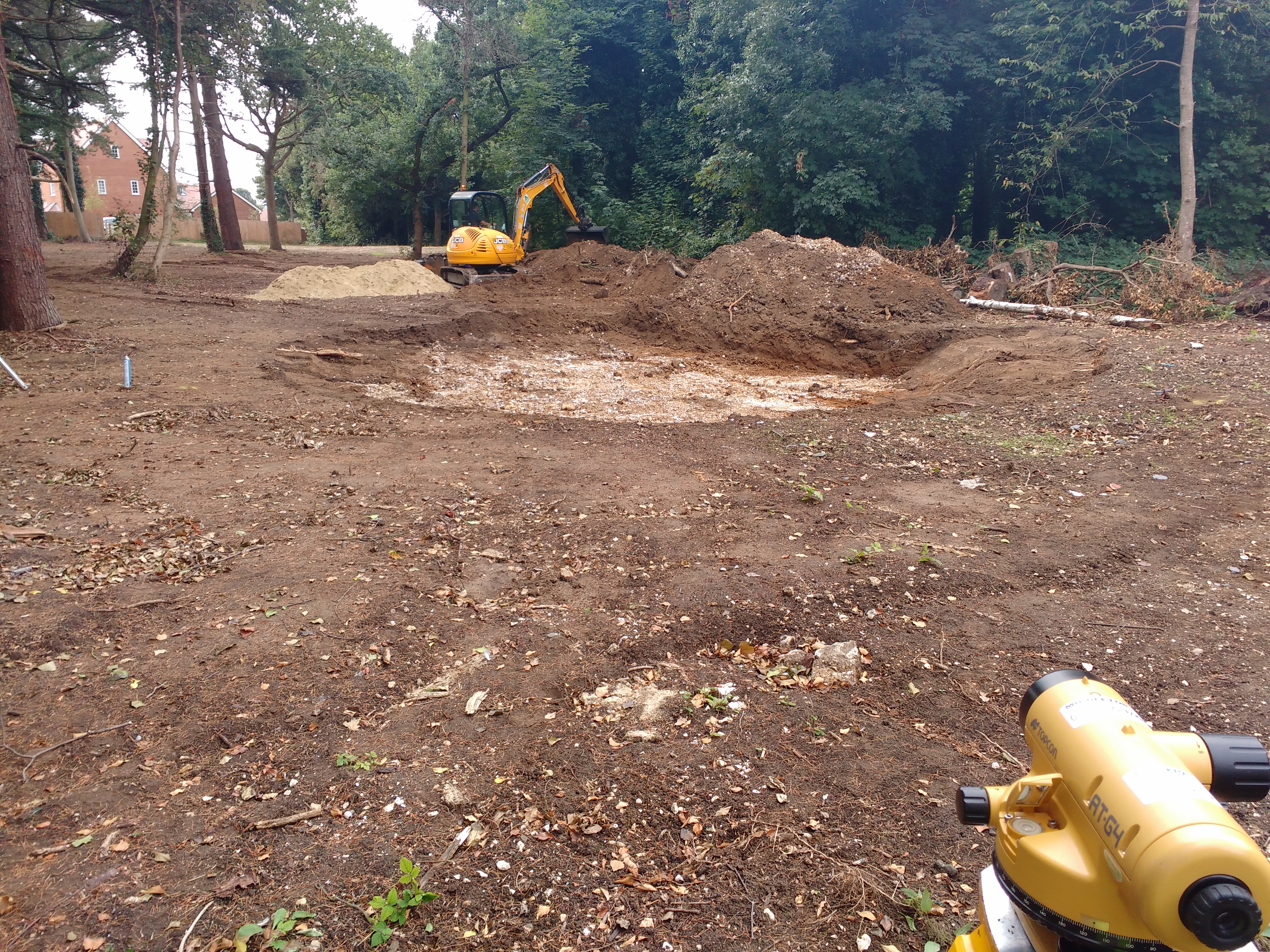
Smoothing out the base and levelling the surrounding ground
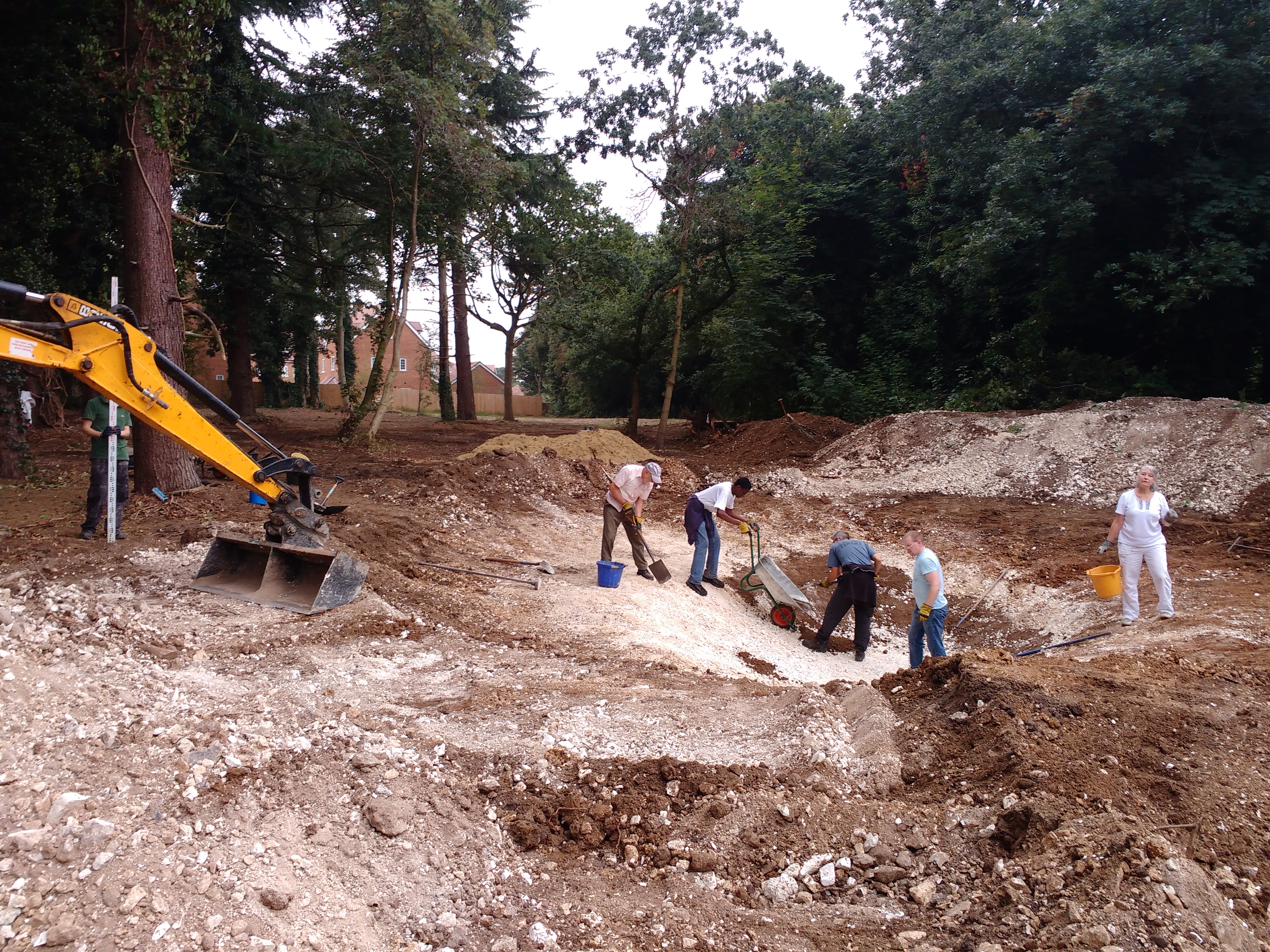
Sand going in to prevent rock or roots near the liner
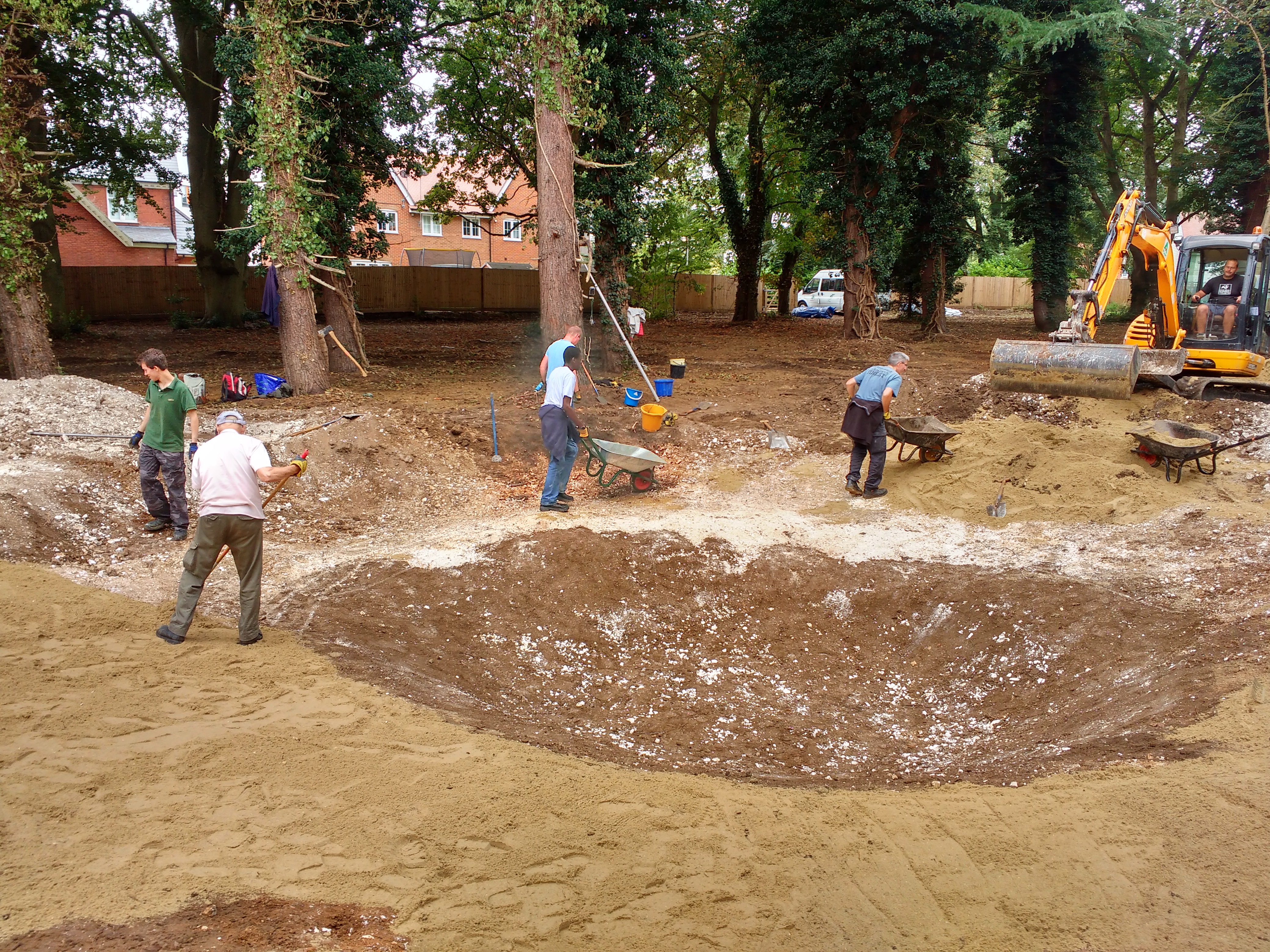
Geotextile woven underliner giving strong protection to liner
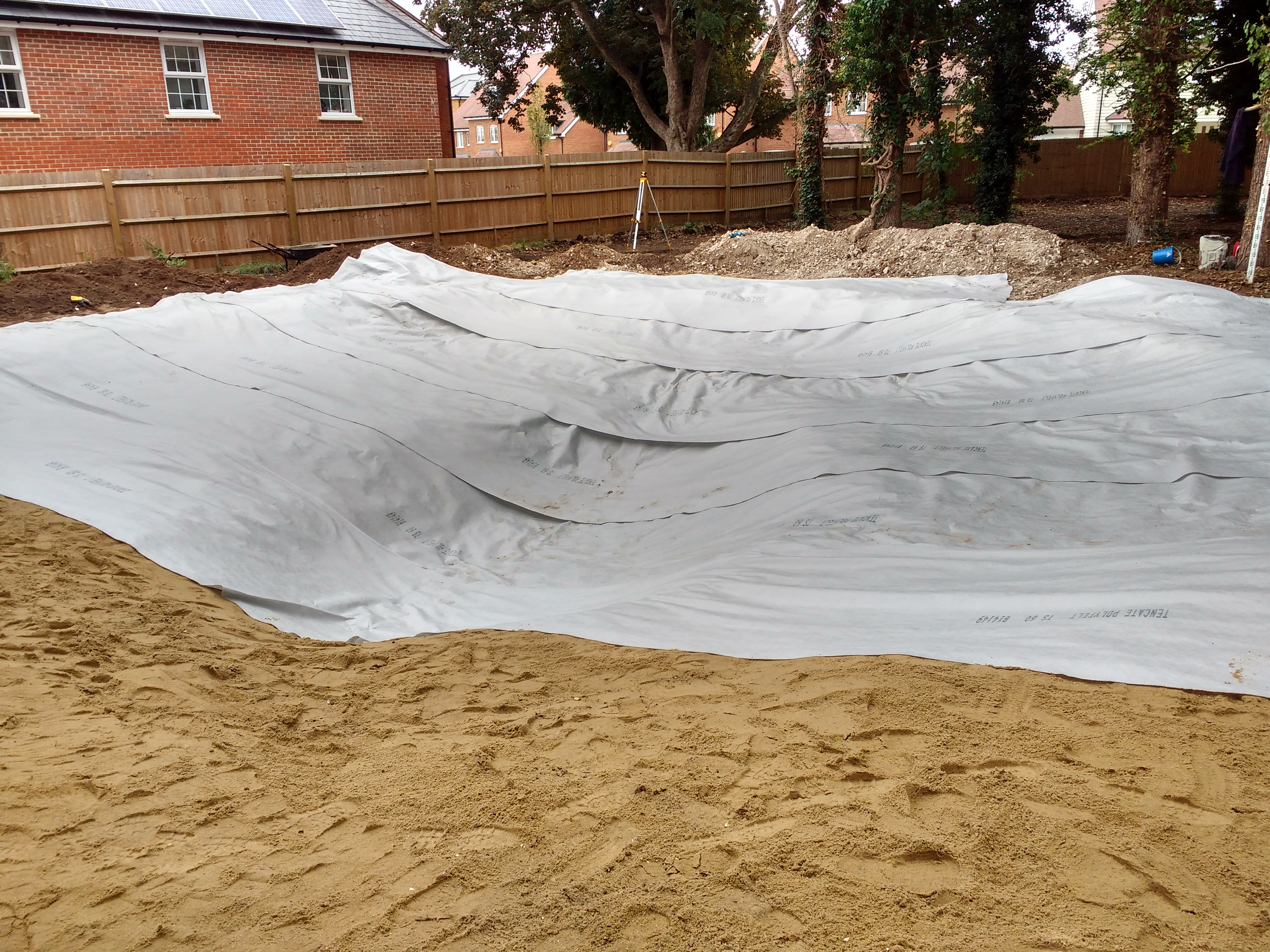
Pond liner unfolds
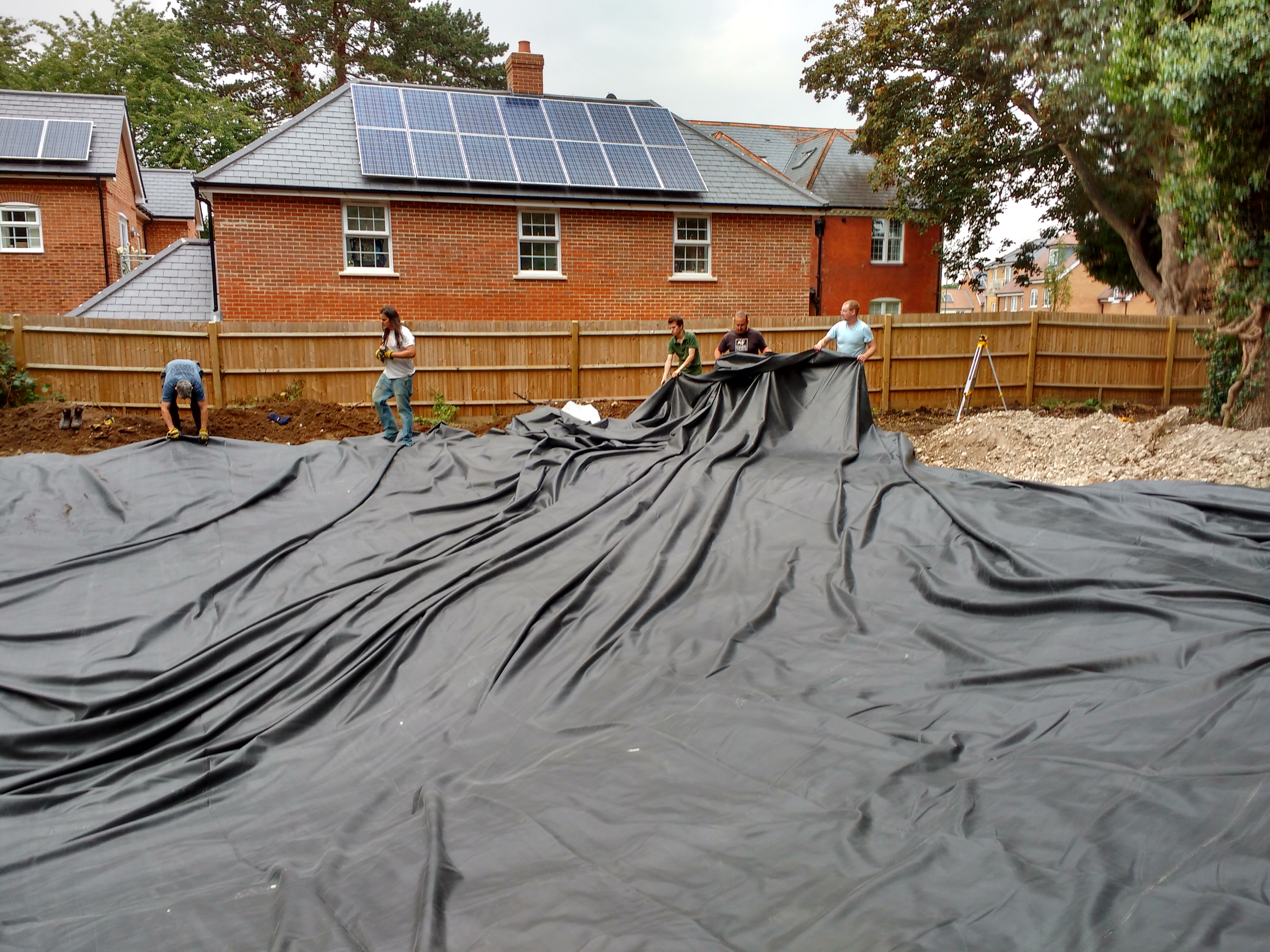
More geotextil overliner and sand to protect the liner
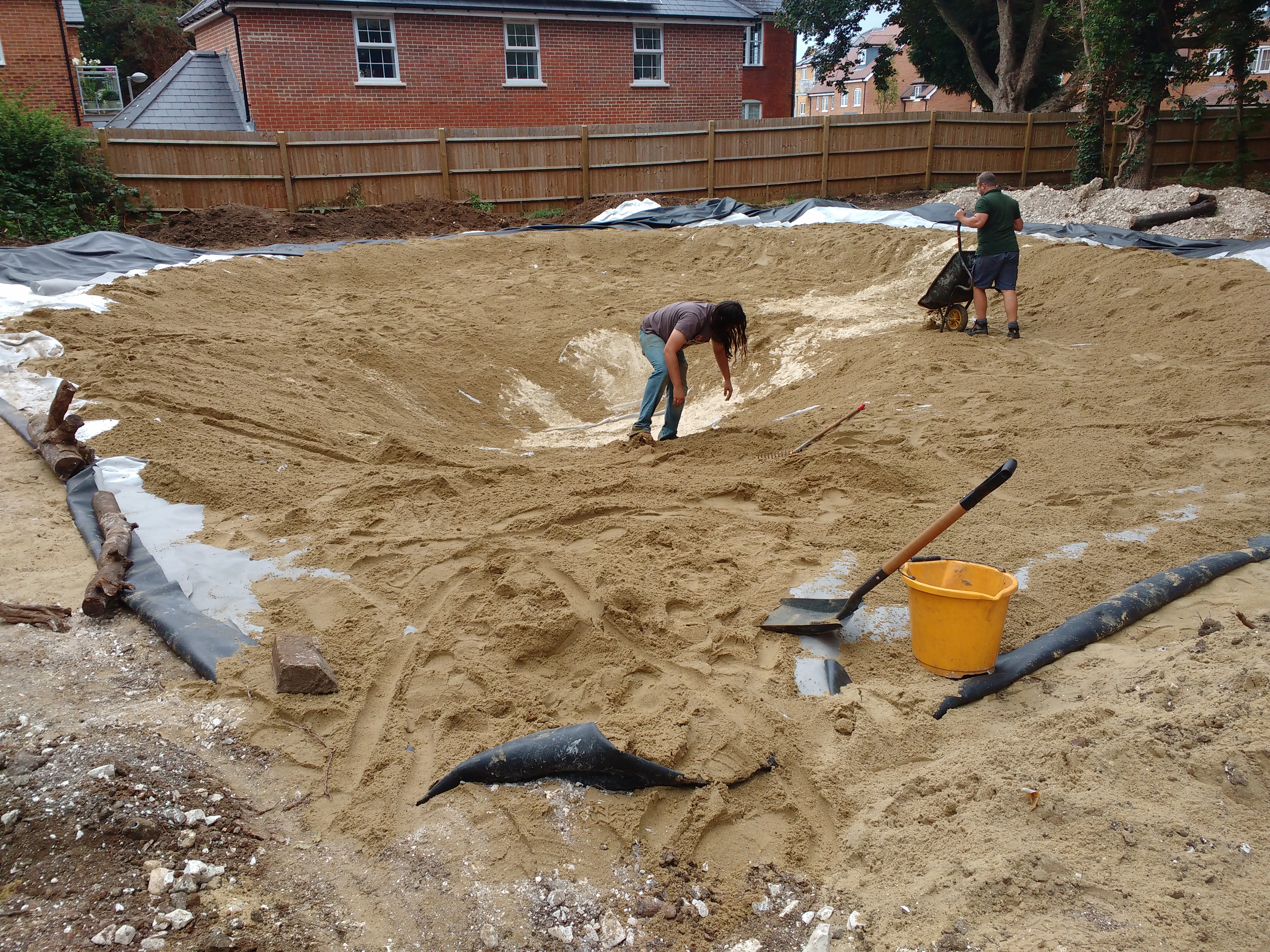
Final fill on top (looking like a bomb crater!)
